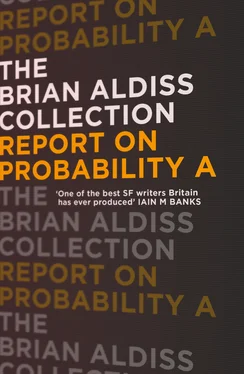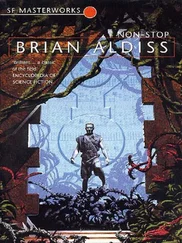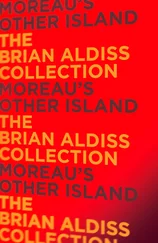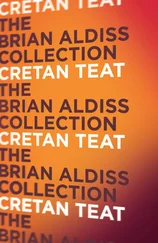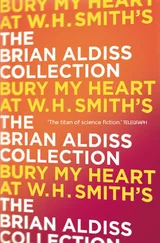Some of these objects were connected directly or in a more tenuous degree with the passage of time. G’s clock had been specifically designed to indicate the passage of time; it was his clock, for he had bought it with part of his wages in the days when Mr Mary was paying him a weekly fee. On its face, which formed a circle, were the arabic numerals from one to twelve and a pair of hands. The smaller of the two hands pointed at the lower lobe of the figure eight, while the larger hand pointed at the space between the nine and the ten. These two hands had been at these positions, maintaining between them an angle of fifty degrees, for a period of something over eleven months. Although, when his attention encompassed the clock, G entertained the theory that the clock still worked, he was reluctant to test the theory by attempting to wind the clock mechanism.
Also connected with the passage of time was a calendar for the previous year, 19—. It indicated the day as being 9th February. G was aware that this date was incorrect. Above the functional part of the calendar (non-functioning though it was) hung a picture, stuck to the same piece of cardboard that bore the pack of dates. When G turned his attention to it, he saw that it bore a representation of two men in period dress standing on the edge of a gorge. One of these men wore a black beard and was pointing with a stick into the gorge; the other man held his hat in his hand and seemed to be gazing, not into the gorge, but at the end of the bearded man’s stick. In the foreground of the picture, the gorge was littered by broken trees and boughs and boulders of large dimension. In the distance, the gorge became purple; over this end of it, a bird with a large wing-span hovered. The scene, though grand, was not harsh, because a gentle afternoon light played across it. This light bathed the two men as if from the wings of a theatre, giving them an air of security although they stood so close to a precipice.
A third object connected more remotely with the passage of time was the front page of a daily newspaper, The Daily —, for a day in April of the preceding year. G had fastened this sheet of newsprint and pictures to the wooden wall by two drawing pins, one at each of the two top corners of the paper; later he had added two more drawing pins at the bottom corners, because the damp emanating from the wall had caused the paper to curl upwards.
G had kept this sheet of newspaper because he found its contents more interesting than the contents of most newspapers. The main headline across the page said SERIOUS BLAZE DAMAGES WARSHIP IN SOUTHERN HARBOUR. The report of this fire, in which nobody was injured, was illustrated by an aerial photograph of the warship with smoke pouring from it. When G was a child of seven years, an uncle had taken him to see this ship. On the other side of the page, headlines announced ZEGENGAIS UNDER ARREST. In the last column was notice of a strike in a car factory. Lower down the page were items of more domestic interest: MITZI TABORI WEDS FOURTH HUSBAND, FISH FAMINE CAUSES RECORD PRICES, and a report on a day of a big murder trial headed ‘IN LAUGHING FIT I KILLED HER’. An item which particularly interested G as a gardener was headed HOSE GOES!, and described how a man in the state of New York had watched in amazement while his fifty-feet-long garden hose had burrowed underground, resisting everyone’s attempts to pull it back; it had finally disappeared, only to reappear two days later outside the Baptist church in what was described as a dazed condition.
Between the sheet of newspaper, which hung on one of the side walls, and the wheelback chair, stood a galvanised bucket and a paraffin stove of old-fashioned design. A small table made of bamboo stood on the other side of the wheelback chair, nearer the couch.
Also in the room was a cupboard of unpainted wood, in which G kept several small toilet articles; a copy of Hugh Walpole’s The Cathedral ; some neatly folded bandages; a crumpled handkerchief belonging to Mr Mary’s wife; a bowl with a rose pattern in which lay rusting curtain hooks, a penknife, and a pair of spectacles that had belonged to an uncle of G’s; a candlestick; some candles; string; several strangely shaped stones found in the garden; a white china cat with the name of a seaside town printed on its stomach; some mending things; a round 1 oz. tobacco tin with holes punched in its lid, in which G had once intended to keep a lizard; and some groceries.
To the left of the cupboard of unpainted wood was one of the two windows set in the front wall of the wooden bungalow. Attached to the left side of it, as G sat on his seat regarding it, was a mirror measuring some fifteen by thirty centimetres and framed in a veneered wood, such as might have belonged at some past period to a small version of a cheval-glass. This mirror or looking-glass was fixed to the window frame at such an angle that, as G sat on the wheelback chair, he could look at the mirror and see reflected in it a part of the garden not otherwise visible from where he sat.
This was the part of the garden visible when one overlooked it in a southerly direction. The reflection showed the west corner of the house, with a concrete path leading round it; and certain limited sections of the garden, such as the vegetable garden, the fruit garden, and a narrow section of a long lawn on which trees grew, beyond which lay, hidden by the decline of the ground, a sunken garden; these sections were divided from each other by privet hedges running in various directions, chopped into pieces by the narrow dimensions of the looking-glass, so that the true relationship of the pieces to one another, the fact that they were often merely fragments of one hedge, would have been lost to a newcomer looking into the mirror.
The hypothetical newcomer would also have seen a more distant hedge that divided the garden from the property of an elderly bachelor known to have an ancestor who had built a lighthouse in the southern hemisphere; part of an asparagus bed lying between the back of the house and an old brick outhouse; the old brick outhouse itself, on the roof of which strutted a homing pigeon; a round window set in the front of the brick building; and sundry other particulars that were regularly glimpsed by G when he directed his gaze to the mirror. Most of the time he sat looking directly out of the window, staring at the blank wall of the house some distance away or, for preference, staring down comfortably at the floor.
On the floor lay two old fibre mats, the stripes of which had faded from their original oranges and greens under the long application of human feet. Because it was not raining, G took up one of these mats and carried it outside. As he began to shake it, he saw Mr Mary’s wife come round the edge of the house. She was walking from the back door to the side gate, which meant that she had to traverse the length of path between G and the house, coming at her nearest point to within twenty metres of him; she saw him, and he knew she saw.
He continued to flap the mat before him, so that its faded orange and green stripes rose and fell before his vision, alternately revealing and concealing her; between each brief concealment she was a fraction further along the path.
When she was at perihelion, and already only a few metres from the brown side gate, G let his arms drop and faced her through the cloud of dust that hung in the air between them.
‘When the fishing is poor, they say the price of fish rises.’
‘Fish are plentiful now.’
‘Are the fish eager to be caught?’
‘My fishmonger has satisfied customers all the year.’
‘Even in a time of plenty, are not some fish more satisfying than others?’
‘All fish contain vitamins, so says my fishmonger.’
Although she slowed her pace as she spoke, Mr Mary’s wife never entirely stopped walking towards the brown side gate; nor did she entirely turn her face towards G. She had now reached the brown side gate, and turned her attention to the bolt. Shedding a small flake of rust, it yielded, and she swung the gate open. She walked through it and closed it from the outside. The gate was set in a wall nearly two metres high; on the top of the wall were embedded a few shreds of bottle glass.
Читать дальше
